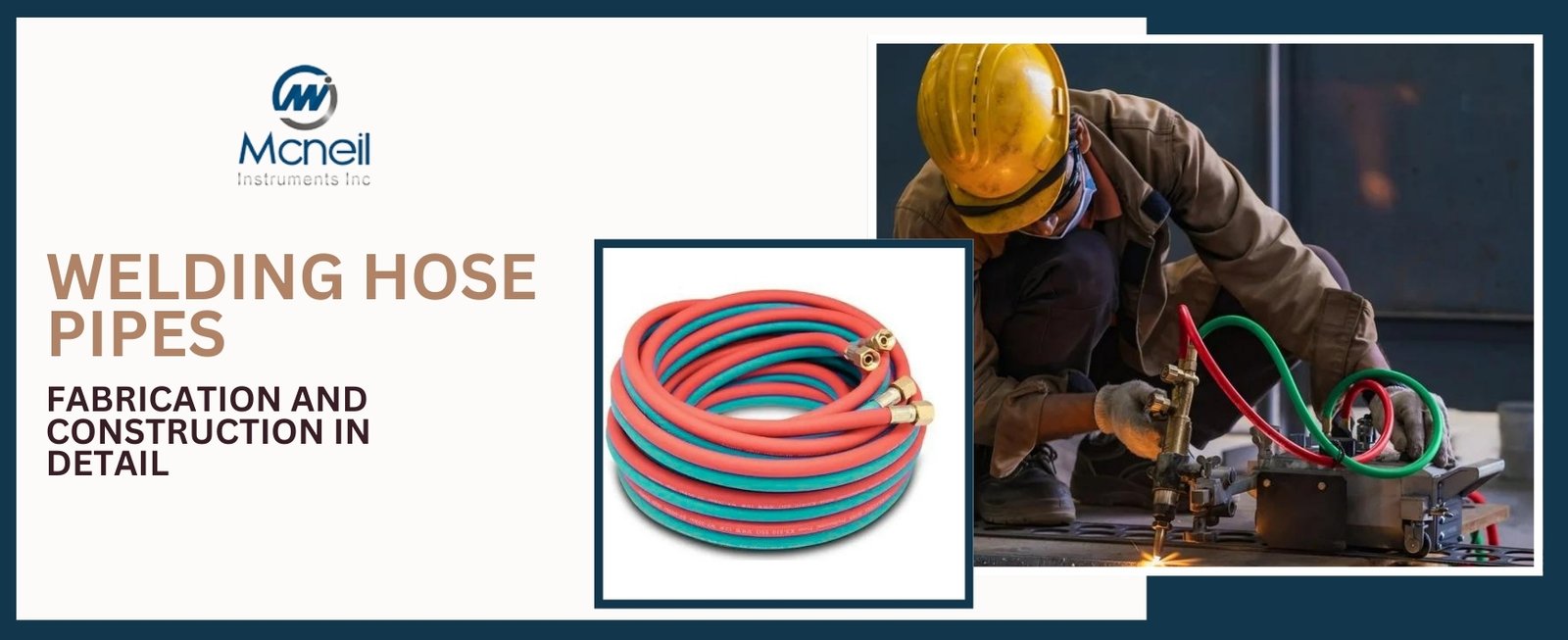Welding hose pipes are like bendy tubes that carry special gases for welding. They’re really important for making things with metal. These tubes are strong and can handle being pushed really hard.
What is a Welding Hose?
A welding hose, also known as a gas welding hose, flexible reinforced welding hose, rubber twin welding hose, or reinforced twin welding hose pipeline, is a hose used primarily for transporting acetylene and oxygen in welding and cutting equipment.
Despite being essential for safely transferring combustible gases to the torch, welding hoses are often overlooked and misused. They endure rough treatment, such as being dragged through mud, driven over, and spilled on, yet they play a crucial role in welding operations. These hoses deliver pressurized oxygen alongside a combustible gas like acetylene, making them vital components.
It’s essential for welders to use welding hoses safely by switching them on and off properly, storing them correctly, maintaining their working environment, and handling them with care.
One characteristic of rubber hoses is permeation, meaning gases contained within the hose can seep through the material and into the environment. This poses a potential risk if the released gases accumulate, potentially leading to explosions or health hazards.
While acetylene has long been the preferred fuel gas for welders, newer gases are being developed to replace it. These new gases have different chemical compositions and may operate at higher pressures than acetylene. As a result, the impact on rubber hoses and their design may vary. Hoses designed for acetylene may not be suitable for use with these newer gases, which operate at higher pressures and have different chemical properties. Therefore, it’s important to use the appropriate hose for the specific gas being used to ensure safety and efficiency in welding operations.
What are Welding hose pipes use
- Carry Gas: Welding hose pipes carry gases like oxygen and acetylene from the source to the welding torch.
- Easy to Move: They’re flexible, so welders can move around easily. This helps keep the gases flowing smoothly.
- Tough: Welding is tough work, so these hoses need to be able to handle heat, sparks, and rough surfaces without getting damaged.
Types of Welding hose pipes
- Single Hose: These hoses are designed for single-use purposes and can carry either oxygen or fuel gas. They are commonly used in low-pressure applications.
- Twin Hose: Twin hoses consist of two hoses joined together, with one hose for oxygen and the other for fuel gas. They are more commonly used in high-pressure applications and are considered safer because they keep the gases together.
Where Welding Hose Pipes are Used
Welding hose pipes are used in many places:
- Construction sites: They’re essential for building structures like buildings and bridges, as well as for repairs and maintenance work.
- Car manufacturers use welding hoses to assemble different parts of vehicleAutomotive industry:s.
- Manufacturing plants: Metalworking industries rely on welding hoses for joining metal components together.
- Shipyards: In shipbuilding and repair, welding hoses play a crucial role in constructing and maintaining ships.
- Maintenance and repair jobs: From small repairs to heavy machinery maintenance, welding hoses are needed across various industries to get the job done.
What is the Difference between Grade R and Grade T Welding Hoses?
Grade R:
Grade R hoses are used with acetylene gas and oxygen. They used to be the only type of twin welding hose available until about 15 years ago. They’re not suitable for propane, natural gas, LP, or propylene because the oils in these gases can damage the hose over time, making it lose flexibility and look cracked. Even though Grade R hoses are cheaper, they don’t last as long and may need replacing within a year.
Grade T:
Grade T hoses were developed to work with alternative fuels like propane, natural gas, and propylene, as well as with acetylene. They cost more than Grade R hoses because they’re designed to withstand the oils in propane, which can damage hoses. Although Grade T hoses can be used for all fuel gases, it’s recommended to change the hose when switching between acetylene and other fuel gases to avoid the oils from propane getting stuck in the hose’s pores. It’s important to know which hoses are for specific gases for safe and effective welding. In the US, oxygen hoses are green, while hoses for acetylene, propane, and other fuel gases are red.
Future of Welding Hose Pipes
Welding hose pipes are likely to get even better. Experts are working on making them tougher, more flexible, and able to handle even higher pressures. They might use new materials and better ways of making them to improve their performance. These advancements will help make welding safer and more efficient for everyone who uses them.
Conclusion:
Welding hose pipes are super essential for welding. They’re strong, flexible, and essential for getting welding jobs done right. Welding hose pipes are super significant for welding. They’re tough, flexible, and crucial for getting welding jobs done right. Experts are always trying to make them even better for the future.





